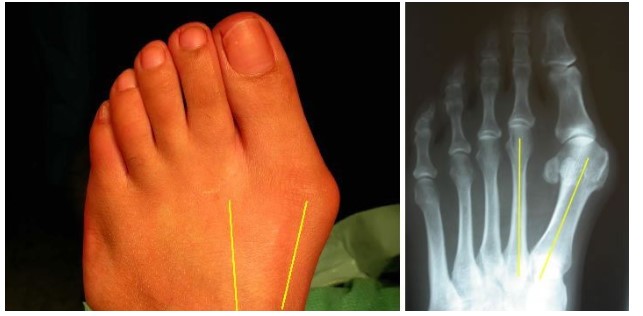Is Bunion Surgery Right for You? Key Information for Making an Informed Decision
Is Bunion Surgery Right for You? Key Information for Making an Informed Decision

Bunions, characterized by a bony bump at the base of the big toe, can be more than just a cosmetic issue—they can lead to significant discomfort and affect your daily life. If you’ve tried various conservative treatments without relief, you might be considering bunion surgery. But how do you know if this step is right for you? Here’s a comprehensive guide to help you make an informed decision about bunion surgery.
Understanding Bunions and Their Impact
A bunion develops when the big toe deviates towards the second toe, causing the joint at the base of the big toe to protrude. This misalignment often results in pain, swelling, and difficulty in wearing shoes. For many, bunions can lead to arthritis, calluses, and significant discomfort during activities that involve standing or walking.
When to Consider Bunion Surgery
Surgery for bunions is generally considered when conservative treatments, such as changes in footwear, orthotic devices, and physical therapy, have failed to alleviate the symptoms. If you experience persistent pain that affects your daily activities, or if you have severe deformity that leads to difficulty in walking, it might be time to discuss surgical options with your podiatrist.
Types of Bunion Surgery
There are various surgical approaches to treating bunions, each tailored to the severity of the deformity and the patient’s specific needs. Some common surgical options include:
- Osteotomy: This procedure involves cutting and realigning the bones in the toe to correct the deformity. It’s commonly used for moderate to severe bunions.
- Arthrodesis: This surgery fuses the bones in the joint, eliminating movement and providing stability. It’s typically reserved for cases where other surgeries have not been effective.
- Exostectomy: This involves removing the bony bump but does not address the underlying misalignment. It is often combined with other procedures.
- Minimally Invasive Bunion Surgery: This technique uses smaller incisions and advanced technology to correct the bunion with less disruption to the surrounding tissues. Recovery times are generally shorter, and there is often less postoperative pain compared to traditional methods.
Factors to Consider Before Surgery
- Severity of the Bunion: The degree of deformity will influence the type of surgery recommended. A thorough evaluation by a podiatrist will help determine the most appropriate procedure.
- Overall Health: Your general health and any existing medical conditions can affect your surgical outcomes. Be sure to discuss your complete health history with your surgeon.
- Lifestyle and Activity Level: Your activity level and lifestyle may impact your recovery time and the type of surgery that’s best for you. For instance, a more active individual might benefit from a procedure with a quicker recovery.
- Surgical Risks: As with any surgery, there are risks involved, including infection, complications with anesthesia, and possible recurrence of the bunion. Understanding these risks and discussing them with your surgeon can help you make a well-informed decision.
- Recovery and Rehabilitation: Postoperative recovery varies depending on the type of surgery performed. Generally, patients can expect to wear a special postoperative shoe, use crutches, and follow a rehabilitation plan to restore normal function.
Preparing for Bunion Surgery
- Pre-Surgical Assessment: Your surgeon will conduct a thorough examination, which may include X-rays or other imaging studies, to assess the extent of the bunion and plan the appropriate surgical approach.
- Pre-Surgery Instructions: Follow all pre-surgical instructions provided by your healthcare team, including dietary restrictions, medication management, and any necessary lifestyle adjustments.
- Postoperative Planning: Arrange for transportation home after the procedure and consider preparing your home for a period of limited mobility.
Alternatives to Surgery
Before opting for surgery, consider exploring all available non-surgical treatments:
- Custom Orthotics: Shoe inserts designed to support proper foot alignment.
- Padding and Splints: To reduce pressure on the bunion and alleviate pain.
- Physical Therapy: Exercises to strengthen the foot and improve flexibility.
- Medication: Anti-inflammatory drugs to manage pain and swelling.
Making the Decision
Deciding whether to undergo bunion surgery is a personal choice that depends on various factors, including the severity of your symptoms, your overall health, and your lifestyle. Consulting with a skilled podiatrist who specializes in bunion treatment is crucial in making an informed decision. They will evaluate your condition, discuss potential outcomes, and guide you through the best options available.
Conclusion
If you’re experiencing persistent pain from a bunion and conservative treatments have not provided relief, bunion surgery may be a viable option to consider. Whether opting for traditional or minimally invasive bunion surgery, thorough evaluation and consultation with a specialist are essential. For those in the Scottsdale area, seeking a professional experienced in bunion surgery can provide the expertise needed for a successful outcome. Bunion Surgery in Scottsdale, AZ, offers a range of options to address your specific needs and help you return to a more comfortable and active lifestyle.









